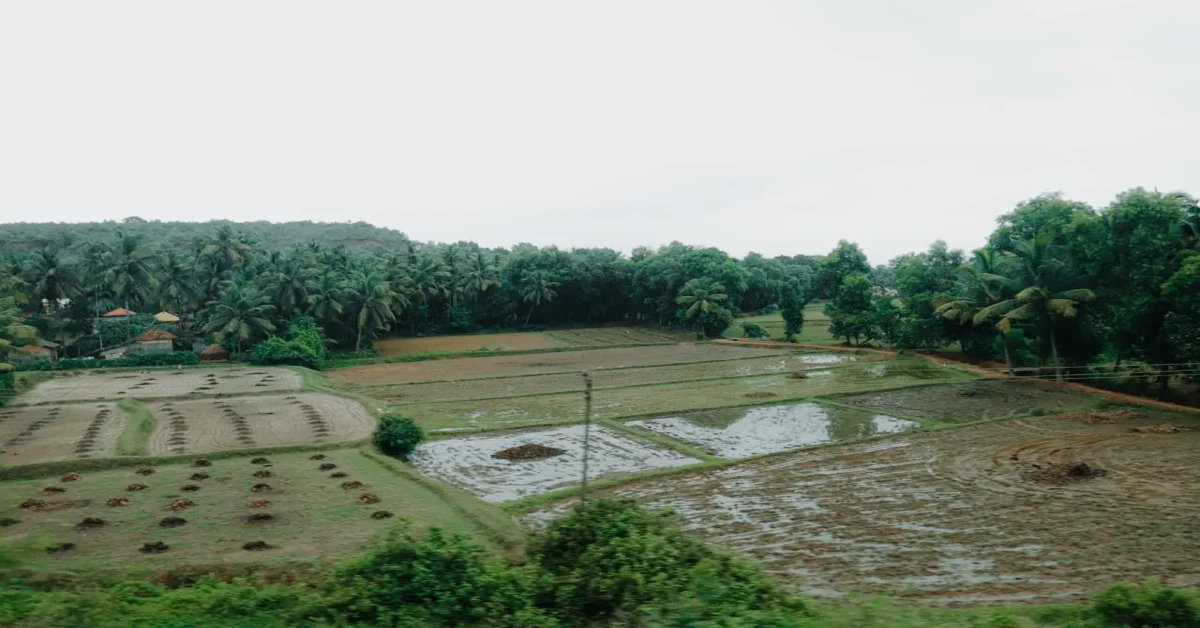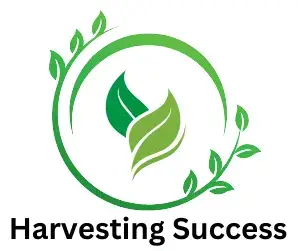Farming is not just about growing crops—it is about working with nature to create a balanced system. Integrated organic farming concepts and methods focus on combining crops, livestock, and natural resources to improve soil health and boost yields.
For example, farmers might grow vegetables alongside fruit trees while using compost from livestock to enrich the soil. This approach reduces waste, cuts costs, and helps protect the environment.
Unlike conventional farming, which often relies on chemical fertilizers, integrated organic farming uses natural techniques to maintain soil fertility and pest control. It not only increases productivity but also supports biodiversity and sustainable food production.
Therefore, more farmers are turning to this method to secure long-term success. By understanding its key concepts and methods, we can see how it benefits both agriculture and the planet.
What is Integrated Organic Farming?
Integrated Organic Farming is a sustainable approach that combines different farming methods to create a balanced agricultural system. It focuses on using natural processes to enhance soil fertility, reduce pests, and maximize productivity.
Instead of relying on chemicals, farmers use eco-friendly techniques like composting, crop rotation, and biological pest control.
This method integrates various components such as crops, livestock, aquaculture, and agroforestry. For example, farmers may grow vegetables alongside fruit trees while raising poultry, whose manure enriches the soil.
By recycling nutrients within the farm, integrated organic farming reduces waste and increases efficiency. It supports biodiversity, improves food security, and helps combat climate change. Therefore, many farmers adopt this system to build a resilient and eco-friendly agricultural model.
Integrated Farming System (IFS)
Organic farming avoids synthetic fertilizers and pesticides, focusing on natural inputs to improve soil health. However, Integrated Farming Systems (IFS) go a step further by combining multiple agricultural activities on the same farm. This approach enhances productivity while reducing environmental impact.
IFS integrates crops, livestock, fish farming, and agroforestry to create a self-sustaining ecosystem. Each component supports the other, maximizing resource efficiency. For instance, livestock manure enriches the soil, fish farming provides organic nutrients, and trees offer shade and fodder.
By diversifying farm activities, IFS increases farmers’ income and reduces risks. Furthermore, it promotes soil conservation and efficient water use, making it an ideal choice for sustainable agriculture.

Types of Integrated Farming Systems (IFS)
Different Types of Integrated Farming Systems help farmers optimize land and resources. Each system balances productivity with environmental benefits.
- Crop-Livestock Integration
This system combines crop production with livestock farming. Farmers grow crops for food while using animal manure as organic fertilizer. For example, dairy farmers may cultivate maize or fodder crops to feed cows, reducing dependency on external feed. This approach improves soil fertility and increases farm productivity.
- Agroforestry-Based Integration
Agroforestry integrates trees with crops and livestock. Farmers grow fruit or timber trees alongside food crops, which provide shade, prevent soil erosion, and improve biodiversity. For instance, in India, farmers plant coconut trees with vegetables, ensuring year-round income while protecting soil health.
- Fish-Poultry Integration
This system involves raising fish and poultry together. Chicken droppings serve as organic feed for fish, while pond water provides nutrients for nearby crops. In many Asian countries, small-scale farmers successfully implement this method to maximize farm output with minimal investment.
- Dairy-Based Integrated Farming
Dairy farming pairs well with crop cultivation. Farmers use cow dung to make organic fertilizers or biogas for cooking. In return, crops provide feed for the cattle, creating a circular farming system. This approach is popular in rural areas where dairy is a major source of livelihood.
- Organic Waste Recycling Systems
Waste management is essential in sustainable farming. Farmers use composting, vermiculture, and bio-digesters to recycle organic waste. For example, kitchen scraps and farm residues are converted into nutrient-rich compost, reducing reliance on synthetic fertilizers and lowering farming costs.
Also Read: Organic Agriculture for Sustainable Food Production
Advantages and Benefits of Integrated Organic Farming
Benefits of Integrated Organic Farming make it a preferred choice for many farmers. It promotes sustainability, health, environment, while ensuring higher farm productivity.
- Environmental Benefits
– Enhances soil fertility and prevents erosion.
– Supports biodiversity by maintaining natural habitats.
– Reduces chemical pollution and conserves water resources.
- Economic Benefits
– Lowers input costs by recycling farm resources.
– Increases profits through multiple income sources.
– Makes farms more resilient to market and climate changes.
- Sustainability Benefits
– Reduces waste through natural resource cycling.
– Improves long-term productivity with balanced farm ecosystems.
– Enhances food security by ensuring year-round production.
These benefits show why integrated organic farming methods are crucial for sustainable agriculture.
Pure Organic Farming vs. Integrated Organic Farming
Pure Organic Farming and Integrated Organic Farming Difference lies in their approach to sustainability. Pure organic farming strictly avoids chemical inputs.
It relies on natural fertilizers, biological pest control, and organic seeds to maintain soil health and crop quality. However, it often requires more land and labor to sustain productivity.
On the other hand, Integrated Organic Farming combines organic practices with diversified farming methods. It integrates crops, livestock, fishery, and agroforestry to create a balanced ecosystem. This approach reduces waste, maximizes resource use, and increases farm resilience.
The key differences include resource efficiency, crop-livestock integration, and long-term sustainability benefits. While pure organic farming focuses solely on chemical-free production, integrated organic farming optimizes the entire farm system.
This makes it more adaptable, cost-effective, and environmentally friendly in the long run.
Integrated Farming Examples
Many farmers worldwide successfully use Integrated Farming Examples to boost yields and protect the environment.
In the Philippines, rice farmers integrate fish farming into their paddy fields. The fish control pests naturally, reducing the need for pesticides. Similarly, in Africa, farmers practice agroforestry by planting nitrogen-fixing trees alongside crops to improve soil fertility.
Another common example is the integration of livestock and crop farming. Farmers use animal manure to enrich the soil while growing fodder crops to feed their livestock. This cycle reduces waste, improves soil fertility, and enhances farm productivity.
By diversifying their farms, many small-scale farmers ensure year-round income while maintaining ecological balance. Such real-world examples prove that Integrated organic farming methods can transform agriculture into an eco-friendly and profitable practice.
Challenges and Limitations of Integrated Organic Farming
Despite its many benefits, there are Challenges of Integrated Organic Farming that farmers must consider.
High Initial Investment – Setting up an integrated farm requires more infrastructure and planning.
Knowledge and Skill Requirements – Managing multiple components like livestock, crops, and aquaculture demands specialized skills.
Labor-Intensive – Integrated farming requires continuous monitoring and hands-on work compared to conventional farming.
Market Access Issues – Selling diverse farm products can be challenging without proper distribution channels.
While these challenges exist, proper training, government support, and market access improvements can make integrated farming a sustainable and profitable solution.
Key Methods of Implementing Integrated Organic Farming
Adopting Integrated Organic Farming Methods helps create a balanced, self-sustaining agricultural system. Farmers use different techniques to optimize productivity while preserving the environment.
Agroforestry Techniques – This method combines trees with crops or livestock. Trees protect soil from erosion, improve fertility, and provide additional income from fruits, timber, or fodder. Farmers also use nitrogen-fixing trees to enrich the soil naturally.
Crop Rotation & Polyculture – Growing different crops in cycles prevents soil depletion and reduces pest outbreaks. Polyculture, where multiple crops grow together, improves biodiversity and lowers the risk of total crop failure due to pests or disease.
Livestock and Aquaculture Integration – Farm animals and fish help recycle waste efficiently. For example, poultry droppings can be used as fish feed, while manure enriches soil for crop growth, creating a waste-free system.
Composting & Organic Waste Recycling – Converting farm waste into compost improves soil structure and fertility. This reduces dependency on chemical fertilizers while managing waste efficiently.
Key Strategies for Successful Implementation
Implementing successful integrated organic farming, two key strategies are:
Proper Farm Planning and Design – Organizing farmland wisely helps maximize efficiency and ensure resource balance. Strategic placement of crops, livestock, and water sources is essential.
Use of Renewable Resources – Implementing biogas, solar energy, and rainwater harvesting reduces costs and promotes sustainability. These methods lower reliance on external inputs and improve farm resilience.
Scope of Integrated Organic Farming
Integrated organic farming has a vast scope in modern agriculture. It promotes sustainable food production by combining crops, livestock, aquaculture, and agroforestry. This method reduces dependency on chemical inputs, maximize profit, while improving soil fertility and biodiversity.
Farmers can adopt integrated organic farming to maximize land use and minimize waste. For example, livestock waste can be turned into organic fertilizer, enriching the soil and boosting crop growth. Similarly, planting trees alongside crops helps prevent soil erosion and supports a balanced ecosystem.
This approach also improves economic stability. Farmers can diversify their income by selling organic vegetables, dairy products, and fish from the same farm.
Furthermore, integrated farming reduces production costs by recycling farm resources. With rising demand for organic food, this method offers a profitable and eco-friendly solution for future farming.
Conclusion
Integrated organic farming methods provide a sustainable approach to modern agriculture. They help farmers boost productivity while protecting the environment. By integrating crops, livestock, aquaculture, and organic waste recycling, farms become more efficient and self-sufficient.












